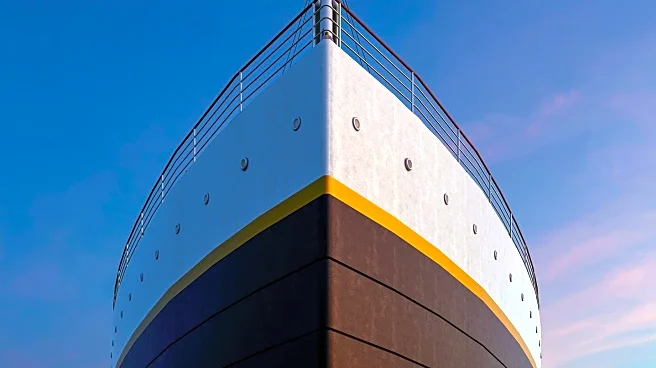What is the story about?
What's Happening?
Researchers in Wisconsin have uncovered a 'ghost ship' in Lake Michigan, which had been hidden for nearly 140 years. The Wisconsin Historical Society announced the discovery of the F.J. King, a schooner that sank in a storm off Baileys Harbor, Wisconsin, in 1886. The ship was known for its elusiveness, having been the subject of numerous search efforts since the 1970s. The discovery was made by a team of 20 citizen scientists and community historians, led by Brendon Baillod, president of the Wisconsin Underwater Archaeology Association. The ship, built in Ohio in 1867, was used to transport grain and iron ore. Despite the storm, the entire crew was rescued, and the ship remains remarkably intact.
Why It's Important?
The discovery of the F.J. King adds to the historical understanding of maritime activities on Lake Michigan and highlights the efforts of local historians and citizen scientists in uncovering lost artifacts. This find contributes to the cultural heritage of the region, offering insights into 19th-century shipbuilding and trade practices. It also underscores the importance of preserving underwater archaeological sites, which can provide valuable information about past human activities and environmental conditions. The discovery may attract interest from historians, archaeologists, and tourists, potentially boosting local tourism and educational opportunities.
What's Next?
Following the discovery, researchers may conduct further studies to analyze the ship's construction and the materials used, providing deeper insights into 19th-century maritime technology. The Wisconsin Historical Society might organize exhibitions or educational programs to share the findings with the public. Additionally, the discovery could inspire more searches for other 'ghost ships' in the Great Lakes, encouraging collaboration between professional archaeologists and citizen scientists.
Beyond the Headlines
The discovery of the F.J. King highlights the role of community involvement in historical research and preservation. It demonstrates how local knowledge and amateur enthusiasm can complement professional efforts in uncovering historical artifacts. This collaboration may serve as a model for other regions seeking to explore and preserve their underwater heritage.
AI Generated Content
Do you find this article useful?
















